If you want your content to rank on Google, mastering keywords isn’t enough—you need to understand why someone is searching in the first place. That “why” is called search intent, and it’s one of the most important (yet often overlooked) elements of a successful SEO strategy.
When your blog post or landing page perfectly matches the reader’s intent, magic happens: higher click-through rates, lower bounce rates, longer dwell time, and ultimately, better rankings. But when your content misses the mark? It doesn’t matter how well-written or optimized it is—it won’t perform.
In this article, we’ll break down what search intent really means, the four main types of intent, and exactly how you can analyze and align your content to meet it. Whether you’re blogging for business or optimizing client content, this guide will help you create content that not only ranks—but resonates.
Looking for blog content custom-made to psychologically target your potential audience and bring them into the fold? Click the button below to work with our expert writers and SEO experts.
What Is Search Intent?
Search intent—also known as user intent—is the underlying reason behind a person’s search query. In other words, it’s what the user really wants to find when they type something into Google. Understanding this is critical for creating content that satisfies the reader and signals relevance to search engines.
The Four Main Types of Search Intent
- Informational Intent
The user is looking to learn something. These searches typically include terms like:- “How to start a blog”
- “What is content marketing?”
- “Benefits of intermittent fasting”
Best content formats: Guides, tutorials, explainers, FAQs.
- Navigational Intent
The user wants to find a specific website or page. For example:- “Shopify login”
- “Fragrantica blog”
- “Ahrefs pricing page”
Best content formats: Branded landing pages, homepage SEO, site architecture optimization.
- Transactional Intent
The user is ready to take action—usually a purchase. These searches include:- “Buy running shoes online”
- “Order gluten-free meal kit”
- “Sign up for email marketing tool”
Best content formats: Product pages, service pages, landing pages, sales copy.
- Commercial Investigation
The user is comparing options and doing research before making a decision. For example:- “Best email marketing software 2025”
- “Mailchimp vs ConvertKit”
- “Top project management tools for teams”
Best content formats: Comparison posts, “best of” lists, review roundups.
Knowing which intent your keyword represents allows you to reverse-engineer content that aligns with what the searcher is looking for—dramatically increasing your chances of ranking and converting.
Why Understanding Search Intent Is Crucial for SEO
Search engines like Google are no longer just matching keywords—they’re trying to deliver the most relevant, useful result for a user’s specific intent. That’s why understanding search intent isn’t just helpful—it’s essential if you want your content to compete in today’s SERPs.
1. It Helps You Rank for the Right Queries
Google rewards content that fully satisfies the user’s intent. If your post is targeting a transactional keyword but delivers an informational guide, it won’t rank—no matter how well it’s optimized. By aligning your content format, structure, and messaging with intent, you improve your chances of reaching page one.
2. It Increases Click-Through Rates (CTR)
When your meta title and description clearly reflect the user’s search goal, they’re more likely to click your link. For example, someone searching “best productivity tools” will expect a list-style blog post—not a product landing page.
3. It Reduces Bounce Rates and Improves Engagement
If someone lands on your page and immediately realizes it’s not what they were looking for, they’ll bounce. When your content matches their expectations, they stay longer, read more, and engage—signals Google uses to rank content higher.
4. It Boosts Conversions
Understanding intent helps you move readers closer to a decision. Someone with commercial intent might not be ready to buy—but if your blog post answers their questions and compares their options, they’re much more likely to take the next step.
5. It Strengthens Topical Authority
When you consistently create content that aligns with different types of intent in your niche (informational, commercial, transactional), you position your site as an authority in the eyes of both search engines and users.
How to Identify Search Intent
Before you create any content, you need to understand the intent behind the keywords you’re targeting. Here’s how to analyze and identify search intent like a pro:
1. Analyze the SERP (Search Engine Results Page)
The fastest way to determine search intent is to Google the keyword and see what types of content are already ranking. Ask:
- Are the top results blog posts, product pages, videos, or category pages?
- Do the headlines suggest education, comparisons, or purchases?
- Are there featured snippets, “People Also Ask” boxes, or shopping carousels?
Pro tip: If most results are listicles or how-to guides, the intent is likely informational. If they’re product pages or reviews, it’s likely commercial or transactional.
2. Look at Keyword Modifiers
Certain words in a keyword signal specific intent:
- Informational: how, what, why, guide, tutorial, learn
- Navigational: brand names, login, official site
- Commercial Investigation: best, top, vs, review, compare
- Transactional: buy, discount, deal, free trial, order
For example:
- “how to write a blog post” = informational
- “best blog writing services” = commercial
- “buy blog content packages” = transactional
3. Use SEO Tools for Clarity
SEO tools like Semrush, Ahrefs, or Ubersuggest often categorize keyword intent. They also show what pages rank and what SERP features appear—giving you deeper insight into what users are actually looking for. For more SEO tips, check out our guide.
4. Put Yourself in the Searcher’s Shoes
Ask yourself: “If I typed this into Google, what result would I want to see?”
Understanding the mindset behind the search can help you write more useful, intent-matching content.
How to Align Your Content With Search Intent
Once you’ve identified the user’s intent behind a keyword, the next step is to match that intent with your content. Here’s how to ensure your blog posts or pages resonate with both readers and search engines:
1. Choose the Right Content Format
The format should reflect what users expect. For example:
- Informational intent: How-to articles, guides, tutorials, listicles
- Commercial intent: Comparison posts, “best of” roundups, in-depth reviews
- Transactional intent: Product pages, service pages, sales copy
- Navigational intent: Brand-specific landing pages, homepage SEO
Example: Someone searching “best CRM tools for small business” expects a comparison post, not a definition of what a CRM is.
2. Use Language That Matches Intent
Write with the tone and structure that fits the searcher’s goal:
- Informational = helpful, educational
- Commercial = analytical, balanced
- Transactional = persuasive, action-oriented
Use calls to action that are appropriate to the stage of the funnel (e.g., “Learn more,” “Compare now,” or “Get started today”).
3. Optimize Titles and Meta Descriptions
Make sure your SEO title and meta description clearly signal that your content matches intent:
- Good for commercial: “10 Best Blog Writing Services in 2025 (Compared)”
- Good for transactional: “Order High-Quality Blog Content – Packages Starting at $99”
This helps increase click-through rates and reduce pogo-sticking (users bouncing back to Google).
4. Structure Content for Skimmability and Trust
- Use clear headings (H2s and H3s) that mirror common search questions.
- Include a table of contents for long posts.
- Add internal links to other useful resources.
- Use visuals (infographics, comparison tables, screenshots) to aid understanding and engagement.
5. Address Related Queries and Subtopics
Look at the “People Also Ask” box and related searches to anticipate and answer follow-up questions within your content. This not only boosts topical authority but also keeps users on your page longer.
Search Intent in Action: Real Examples and Takeaways
Understanding search intent is one thing—executing on it is what separates average content from content that ranks, converts, and builds authority. Let’s look at a few real-world examples of how aligning with search intent pays off.
Example 1: Informational Intent – “How to Start a Blog”
Wrong approach: A sales page pitching blog setup services.
Right approach: A detailed, step-by-step blog post guiding beginners through the process, with screenshots, tool recommendations, and FAQs.
Why it works: The user wants to learn, not buy—yet. But by offering value, you build trust and can introduce your service as a helpful next step.
Example 2: Commercial Intent – “Best Email Marketing Tools”
Wrong approach: A general definition of what email marketing is.
Right approach: A comparison post that evaluates different tools (e.g., Mailchimp vs ConvertKit), includes pros and cons, and is updated regularly.
Why it works: The user is researching before making a decision. They want unbiased info, side-by-side features, and social proof.
Example 3: Transactional Intent – “Buy Blog Posts”
Wrong approach: A long-winded blog post about why content matters.
Right approach: A landing page with clear pricing, service details, testimonials, and a “Buy Now” or “Get a Quote” button.
Why it works: The user is ready to spend money—they don’t want to be educated; they want to convert quickly.
Key Takeaways
- Intent beats keywords. Two people searching for similar phrases might want totally different outcomes—match the why, not just the what.
- The SERP is your guide. Google’s top results show what it believes users want—learn from them.
- Form follows function. The way your content looks, reads, and flows should reflect the searcher’s expectations.
- It’s an ongoing practice. Search behavior evolves—review your content regularly to stay aligned with intent.
By mastering search intent, you don’t just improve rankings—you create content that connects, converts, and builds lasting authority in your niche.
Frequently Asked Questions (FAQ)
What is search intent in SEO?
Search intent refers to the reason behind a user’s search query—whether they’re looking to learn something, compare options, make a purchase, or find a specific website. Understanding intent helps you create content that directly answers what users are looking for, which improves rankings and engagement.
Why is search intent important for blog posts?
Search intent ensures your blog post matches what users actually want. If your content aligns with their needs—whether it’s a tutorial, a comparison, or a product review—it’s more likely to rank on Google, reduce bounce rates, and generate conversions.
How do I identify search intent for a keyword?
You can identify search intent by:
- Looking at the top-ranking pages on Google (SERP analysis)
- Noting keyword modifiers (e.g., “how to,” “best,” “buy”)
- Using SEO tools that tag keywords by intent
- Asking yourself what the searcher really wants to achieve
Can a single blog post satisfy multiple types of search intent?
Yes, but it needs to be structured carefully. For example, a post titled “How to Choose the Best CRM” can address informational, commercial, and even transactional intent if it includes education, comparisons, and CTAs.
How does search intent affect my content strategy?
Mapping your content to search intent ensures each piece serves a purpose in your funnel—from attracting new visitors to converting them into leads or customers. It also helps prioritize what to write and how to structure it for the best SEO results.
Get in touch today for a content strategy that nails search intent. Explore


